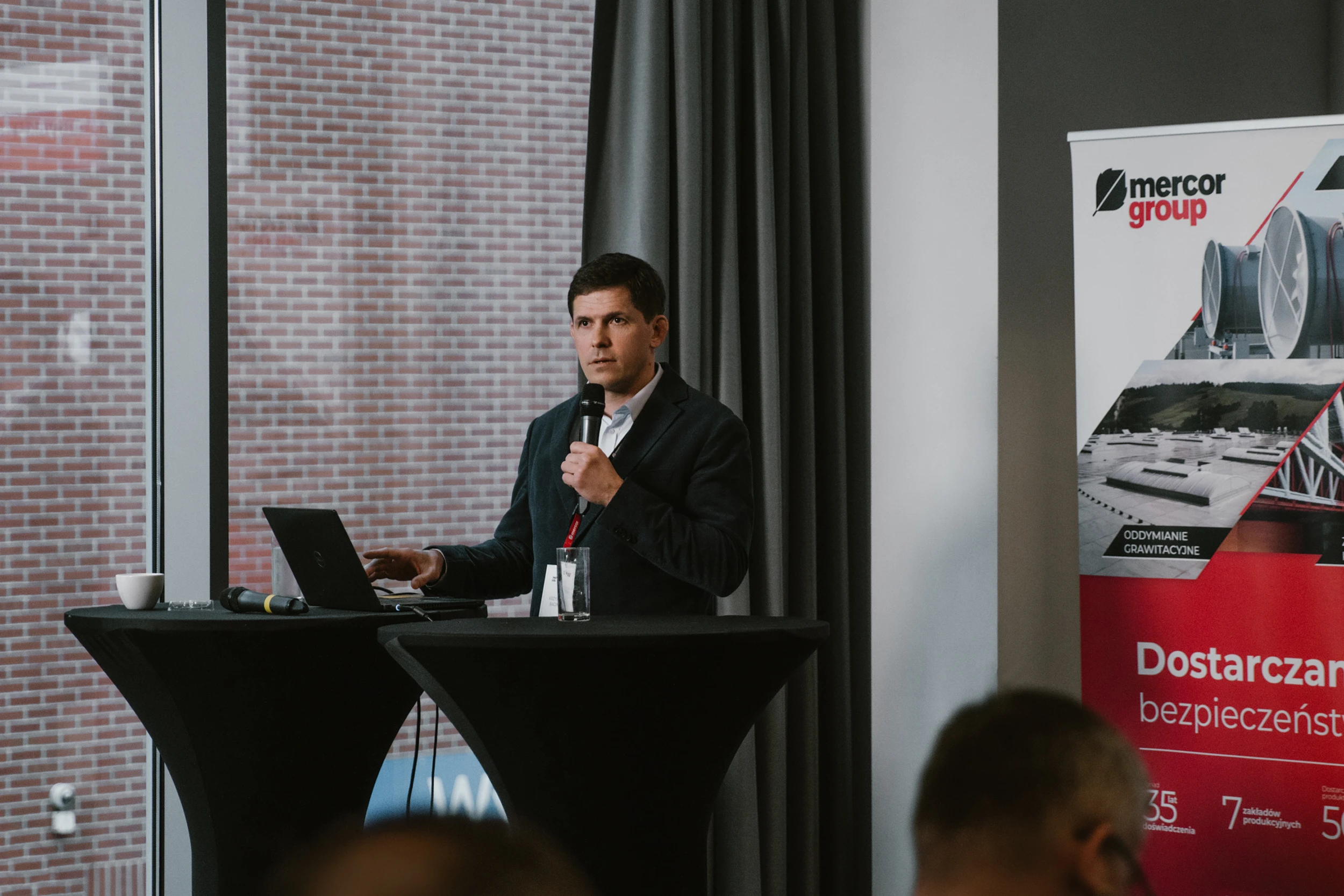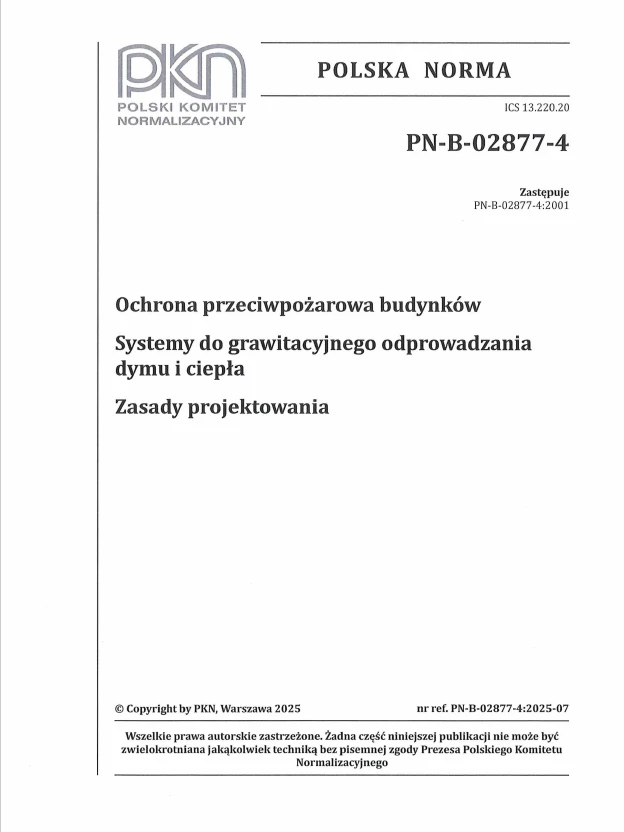A new version of the standard on fire protection in buildings has been published!
The Polish Committee for Standardization has published the long-awaited new version of the standard Fire protection in buildings -- Systems for natural smoke and heat extraction -- Part 4: Design principles.
The publication incorporates a modern approach to fire protection and, in addition to revised terminology, introduces a number of new features that address current challenges in the design of systems for natural smoke and heat extraction from buildings. The new version of the standard PN-B-02877-4 was published on July 17, 2025, and replaces the previous version: PN-B-02877-4:2001.

Krzysztof Bagiński, a fire protection expert, fire appraiser, member of SITP, and member of the Polish Ventilation Association, collaborating with MERCOR, co-authored the publication. The standard was prepared by the Polish Association of Fire Protection and Rescue Equipment Manufacturers, of which MERCOR is a member.

What new guidelines can be found in the PN-B-02877-4 standard?
It specifies the design principles for natural smoke and heat extraction systems in single-story buildings and on the top floors of multi-story buildings. The document also includes rules for the placement of smoke extraction devices in walls and minimum values for the active smoke extraction area in smoke zones, stairwells, elevator shafts, and horizontal escape routes.
It also describes the minimum active smoke extraction area in buildings for smoke zones between 3.0 m and 15.0 m high, stairwells, elevator shafts, and horizontal escape routes. For other selected spaces, it specifies the principles for determining the required active smoke and heat extraction area.
The standard also addresses the use of wall-mounted natural smoke and heat extraction devices, as well as the installation of fixed, automatic water extinguishing systems in smoke zones. New guidelines have also been provided for the commissioning and testing of gravity smoke and heat extraction systems, as well as procedures for failure management.
The new standard is available in the Polish Committee for Standardization store: link.
